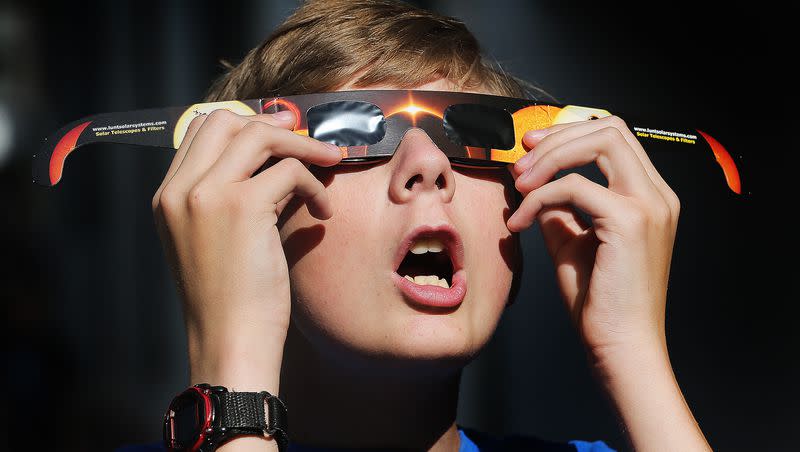How to see a rare hybrid solar eclipse

A rare hybrid solar eclipse is happening Wednesday night and into Thursday morning.
As the moon passes between the Earth and the sun, parts of Australia, East Timor and Indonesia will be able to view this celestial event, CNN reported.
What is a hybrid solar eclipse?
According to Space.com, a hybrid solar eclipse occurs when the eclipse “shifts from total solar eclipse to annular (ring-shaped) as the moon’s shadow moves across the surface of the Earth.”
Due to the curvature of the Earth, people will see the eclipse differently in different locations — some may get to experience a total eclipse while some will see an annular eclipse.
A hybrid solar eclipse is pretty rare. The last time one occurred was in 2013, while the next one will be visible November 2031. The one following that won’t happen until March 2164, per The Weather Channel.
How to view the hybrid solar eclipse
The hybrid solar eclipse will begin at 7:36 p.m. MDT on April 19 and end at 12:59 a.m. MDT.
Below is a list of where the hybrid solar eclipse will be visible, according to NASA:
Total eclipse visible:
Australia.
Southeast Asia.
Annular eclipse visible:
Pacific Ocean.
Indian Ocean.
Partial eclipse visible:
Australia.
Southeast Asia.
Antarctica.
If you are not in any of the above locations, you can still see the eclipse by watching NASA’s livestream from Australia. The livestream will begin at 8:30 p.m. MDT on Wednesday, April 19.

